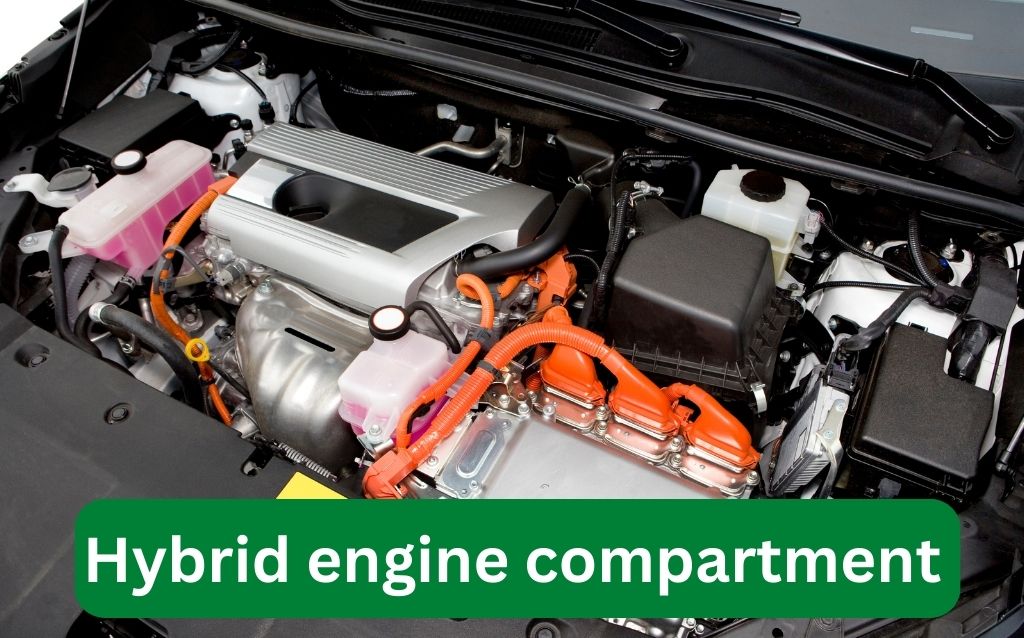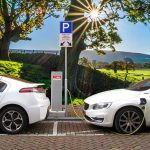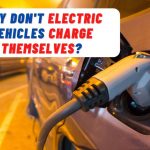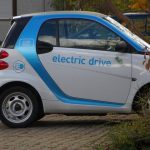Last Updated on January 15, 2023 by

Electric cars do not have alternators. Automotive alternators are used in conventional vehicles to generate electricity to power the car’s electrical system and charge the battery to store power. An alternator has two functions:
- Generate alternating current
- Convert and regulate current to 12 volt DC
Do electric cars have an alternator?
Electric cars are often heralded as the eco-friendly alternative to gas-operated vehicles, but it may surprise you to learn that they don’t use the same technology to charge the battery as your standard gasoline cars.
Usually, an alternator recharges the car’s battery using the engine but electric cars don’t have an alternator. Let’s unveil the mystery behind it.
Why do electric cars not have alternators?
In gasoline-powered cars, mechanical energy is converted into electrical energy by an alternator as a result of fuel combustion but there is not in an electric car. If we run alternator with electric motor then it will consume more electrical energy than generated one. There is no use for this because there is nothing good to gain.
Do hybrid cars have alternators?
Hybrid cars don’t need an alternator because multiple motors/generators (M/Gs) are designed to produce the required voltage and current to power your vehicle. A specially designed planetary gear system connects these M/Gs with a device called DC/DC converter. In decelerating phase, a hybrid car has the capability to change kinetic energy into electricity with the regenerative braking system.
Is there an electric car that charges itself without an alternator?
In general, No! Because electric vehicles use batteries as their main source of power. If they run out of juice, they need to be plugged in and charged like any other battery-powered device. However, Sono Motors’ electric car SION can self-charge without ever needing to stop at an outlet again! It has powerful solar cells integrated into the body.
Why can’t electric cars charge themselves?
Electric vehicles cannot recharge themselves because doing so would violate the law of energy conservation. Like an object trying to fly through the air without any propellers or wings, it doesn’t work. When the motor will be used to supply kinetic energy to run the alternator, the energy loss at each stage will decrease efficiency and increase heat production.
Can you charge an electric car with a wheel spin?
This cannot be implemented since it violates the laws of physics. The mechanical/Kinetic energy of spinning wheels can be converted to electricity, but an electric car cannot draw enough power from this form of energy to recharge powerful batteries. It is not applicable due to the lack of complete transfer of energy resulting from rotational motion.
Do electric cars have transmissions?
Electric motors deliver power instantly, so there’s no need for a transmission. Though combustion engines possess multi-speed transmissions to function efficiently, an electric motor doesn’t require a gear system for speed transmission as it delivers maximum torque at a specified RPM effectively. Also, an electric car has a single-speed transmission that directly drives its wheels.
Can you charge an electric car with a generator while driving?
It doesn’t make sense actually. Electric cars are designed for charging at home or work. If you want to travel in your electric car, you need to manually plug into a charging station. Generators cannot provide a stream of power that can match the energy consumption needed plus the portability of high power generators is also a challenge.
Electric vehicles (EV) are becoming more common these days. They are considered greener alternatives to conventional gasoline powered vehicles.
The main reason is that they are powered by electricity, which can be obtained from renewable energy sources, rather than an internal combustion engine, which can only be powered by specific fossil fuel ignition.
Since the power source of the car is input into the battery, rather than generated by the car itself, there are a lot of components that are no longer necessary in the engine and are thus missing from electric cars.

Things like spark plugs and fuel injectors are there to generate and manage combustion, and so are unnecessary in an electric car.
These are obvious objects that you can do away with in electric vehicles, but some are more confusing. Like alternators, a completely necessary component of a gas powered car and to the naked eye they could be useful in an EV.
But do EVs have them? In this article, we will look closer at electric vehicles and see whether they have an alternator or not.
What is an Alternator?
You may be sitting here wondering what an alternator is and why it is such an issue. Well, a combustion car relies on mechanical energy to work. Mechanical energy is generated when the fossil fuel in the engine combusts, creating kinetic energy or force. This kinetic force is transferred throughout the engine and makes its way into the alternator.
The alternator is pushed by the kinetic energy and spins at great speed, which creates electrical energy. This in turn powers other necessary systems in your car that are connected to the engine and recharges the battery, which is its main purpose.
How Do Alternators Function?
The way an alternator converts mechanical energy to electrical energy is using the kinetic force generated by the engine to spin a magnetic field around a coil of wire, which generates alternating current (AC).
An alternator has two poles, one positive pole and one negative pole. When the motor turns the alternator, it pulls the magnetic field towards the positive pole and pushes the magnetic field toward the negative pole. This causes the AC voltage to increase and decrease between the positive and negative poles.
ICE vehicles – What size alternator do you need?
Alternators are rated in amperes (amps) and for most cars the range is from 50 to 400 amps for the big SUVs.
Table – Alternator sizes for popular cars 2022
Car | kW (kilowatts) |
Kia Forte | 55-65 |
Honda Accord | 80-90 |
BMW X1 SUV | 320 |
Ford Focus | 130 |
Grand Jeep Chrokee | 320-400 |
Renault Clio | 75 |
Chevrolet Silverado | 370 |
Toyota Camry | 250-320 |
Chevrolet Malibu | 250-320 |
VW Jetta | 250 |
Mazda3 | 180 |
Kia Forte | 200 |
When the engine stops turning the alternator, the magnetic field collapses and the AC voltage decreases. This means that the alternator is not generating any electricity after the engine stops running. The same thing happens if the engine starts up again because the magnetic field tries to expand back outwards.
However, as soon as the engine starts turning again, the magnetic field expands and causes the AC voltage to rise again. In this way, the gas powered car can function properly, and the battery can be recharged.
Do hybrid cars have alternators?

Most hybrid cars have an alternator, as some of it’s driving force comes from fossil fuels.
Completely electric cars (BEVs) do not have alternators in them for a variety of reasons. For starters, alternators convert energy, they do not produce it. In order to convert energy from one state to another, your car needs to generate a certain amount of force.
In gas powered cars, this force is generated by combustion and creates mechanical energy. Since electric cars do not have this energy source and don’t actually generate any energy on their own, they cannot convert it.
Another reason is that electrical cars are solely powered by electricity. Alternators convert different kinds of energy into electricity. Since you can not convert energy into the same type of energy without losing basically all the energy, this would make alternators useless in an electric car.
Could Future Electric Cars Have Alternative Alternators?
While great advances are being made with gas powered alternators – such as the TPV generator, which could replace the alternator in the future – there has been no such advance in developing any kind of alternator that could charge an electric car’s battery or at least it has not been spoken about publicly.
To create such a device for EVs would require the manufacturers to figure out how to get the car to generate a secondary energy source. This would be insanely expensive and potentially fruitless, as electric cars run well without an alternator. The convenience is not worth the cost.
How Do Electric Cars Recharge Their Batteries?
When a car is stationary, it can be charged using electricity in the same way one would recharge a laptop. Once you buy an electric car, it will come with a huge cable, normally up to 20 feet long.
This cable can be plugged into a home wall outlet and your car will charge. Unfortunately, your electric motor will have quite a different voltage from your home appliances (the standard for an outlet is 120 volts), and so it will only add 3 to 5 miles for every hour you charge.
As such, most people who own electric cars forked out some cash and got a 240 volt outlet, which will add 25 to 30 miles to your battery for every hour you leave it charging. There are industrial outlets that can charge your car much faster, but these are terribly expensive and only really used in commercial settings.
Can You Charge on the Road with an Electric Car?
There are ways when you are driving around to charge your car, but they require you to meet certain criteria to start the charging process. Currently, the most effective way is through a method called the regenerative braking mechanism.
When your car slows down to certain speeds, the vehicle enters generator mode and uses the kinetic energy produced by the wheels. This kinetic energy is converted into electrical energy and charges the battery. Due to the nature of the process, it cannot be used when the car is driving normally.
Unfortunately, many of the other methods are not very effective, but the ideas are moving in the right direction.
Is there an electric car that charges itself?
There are obvious problems with attempts to recharge both gas powered and electric cars, with some of the problems covered in the previous paragraphs. However, there may be one solution in the pipeline as well.
Energy sources for electric vehicles

The only way we will be able to recharge an EV in the future is through finding an additional power source to convert into electrical energy. The most probable way we will have to recharge future EVs is solar power. This is because you can easily affix solar panels to the outside of your car to charge it while it drives.
The easiest way to use solar power at home to charge an EV is connect the solar energy output to 24V to 120V inverter, and just use the low charge rate ‘granny cable’. About 3000 watts of solar would be required to charge a car fully in 24 hours.
This may seem far-fetched, but many companies have invested in this idea and there are even prototype cars that use this technology. Currently, the only car that is totally solar-powered is the prototype Light-year One, which can go up to 450 miles on a single charge, which isn’t much, but it is a step in the right direction.
Do Teslas have an alternator?
Tesla’s electric cars are manufactured without an alternator installed. Tesla uses a DC to DC converter to power up its accessories. This is much more efficient than using an alternator because it only provides power when needed and can be more precisely controlled for each component that needs it. So Teslas are free from the alternator.
Do electric cars recharge while driving?
Electric vehicles (EVs) use high-quality Lithium batteries to power their motors. While that battery can be only recharged from an outlet which takes about 6-10 hours for most EVs, how can they be recharged while driving?
They don’t. There is no way to plug in your car and charge it up as you drive down a highway or around town. The simple answer is that this would contravene the basic laws of physics and create a perpetual motion machine.
Do electric cars recharge their own batteries?
Plug-in electric vehicles (EVs) use batteries to power their high-efficiency motors but they can’t charge themselves. This means that, even if you have the latest model of a 100% electric vehicle (EV), you can’t rely on them for self-charging. You’ll still need to get power from somewhere else when your battery runs out of juice.
Video – key points from post ‘Do EVs have alternators’?
Why aren’t electric cars more popular?
The biggest reasons are:
- Cost
- Range anxiety
- Manufacturing carbon footprint
What are the advantages of a dedicated EV charger?
Charging an EV needs special equipment to charge the vehicle at different rates. A dedicated EV charger will charge your car about 8 times faster than the plug-in slow-charge method and it’s smart, which means the battery will be charged at exactly the best rate for the battery condition, On the downside, it needs a special installation and possible an upgraded power supply.
What is an automotive alternator and how does it work?
common questions – The alternator is one of key components of ICE vehicles. It charges the battery and operates electric accessories needing nominal 12 volts DC. These devices use waste rotational energy from the engine crankshaft, transferring torque to the rotating shaft of the generator.
The rotor spins inside stator coils fitting around the casing. The stator windings generate electric current which is collected by carbon brushes. The same drive belt often drives the water pump and powered steering.
How does an electric car battery work?
An electric car battery is a collection of 6 x 2 volt lead-acid cells with a total nominal volts of 12. Its actual voltage will vary between 11 volts and 12.3 volts, depending on its state of charge. ‘Nominal’ means that the battery is designed to operate accessories that need around 12 volts DC.
Car batteries can deliver hundreds of amps to start a car engine, after which, the alternator quickly charges it back up.
How do electric car batteries work?
What are drive wheel motors and how do they power Electric Vehicles?
Most electric cars have one or two motors that drive the front or rear wheels. Very good all wheel drive can be achieved by driving each wheel axle separately with a dedicated motor. The motors are identical to the bigger traction motors, with an electrified coil generating an electromagnetic field to provided torque.
They are not more common due to the complex connections and control required, plus the fact that it complicates battery usage.
How much engine power do Electric Vehicles have?
Automobile engine power output affects performance which of course influences car insurance payments adversely. The follow tqables shows the power output in kW and horsepower for popular cars:
Table – compare power output of popular electric cars
Car | kW (kilowatts) | Horsepower |
Tesla Model X Plaid | 1006 | 750 |
Chevrolet Bolt EV | 150 | 200 |
Volkswagen ID.5 Pro Performance | 127 | 174 |
Lexus UX 300e | 150 | 201 |
Porsche Taycan Sport Turismo Turbo | 500 | 671 |
Ford Mustang Mach-E GT | 357 | 480 |
Peugeot e-208 50 kWh | 100 | 136 |
Audi e-tron 55 quattro | 300 | 408 |
Toyota Mirai FCB130 | 114 | 155 |
Mercedes-Benz EQS SUV 580 4MATIC | 400 | 536 |
How much electrical power do Electric Vehicles consume?
Cars with more accessories, such as electric wipers, big audio system or upgraded AC will consume more power. In general, an electric car with a 50kWh rated battery (Peugeot e208) will consume about 220 watt/hour per mile in mild weather conditions with no AC or heater.
What are the benefits of owning an Electric Vehicle over a traditional gasoline car?
Electric cars are bringing massive changes to the automotive industry. One reason is that the revenue from maintenance tasks such as oil changes, don’t exist any more! Some of the benefits of EV use are listed below:
- No oil changes
- No toxic emissions while driving
- Can be charged with solar
- No more waiting at gas station
- Increased acceleration (induction motor gives instant torque)
- Enhanced reliability
- Use less energy (in regenerative mode)
- Lower carbon footprint while in use
- Chemical energy from fossil fuels not used so they are cleaner
What is a DC-DC converter?
A DC-DC convertor is solid-state electronic device that changes DC voltage either up or down. The conversion process is very efficient and can also change a small DC current into a bigger output current. It basically uses a diode bridge to switch voltages.
Other resources relating to electric vehicles and alternators
What Is an Alternator? | News – Cars.com
Do electric cars have alternators? – Jerry
Why Don’t Electric Cars Have Alternators? – 300MPG.org
Do Electric Cars Have Alternators? – VEHQ
- Why Electric Vehicles Are Not Popular - January 29, 2023
- How Long Do Tesla Batteries Last Per Day? Battery Facts - January 25, 2023
- Do Electric Vehicles Have Air Conditioning? - December 21, 2022










